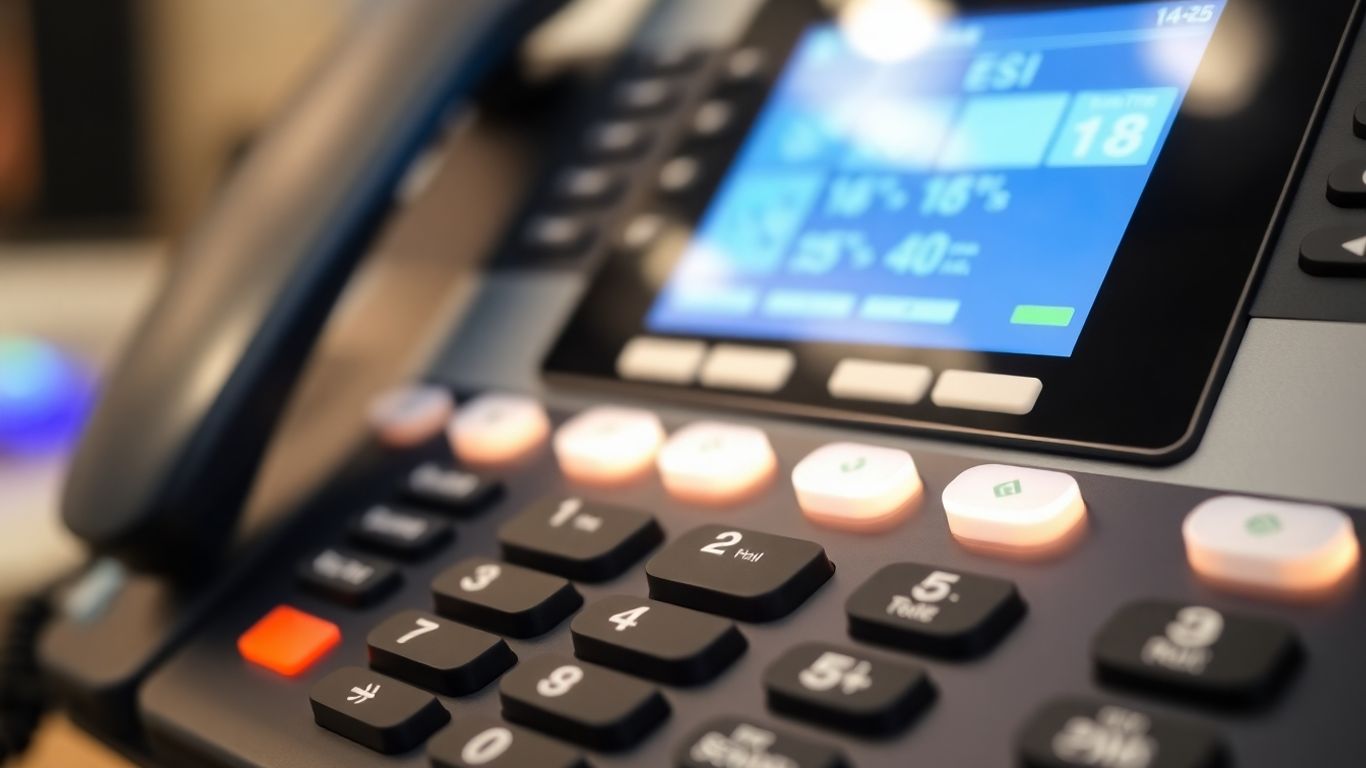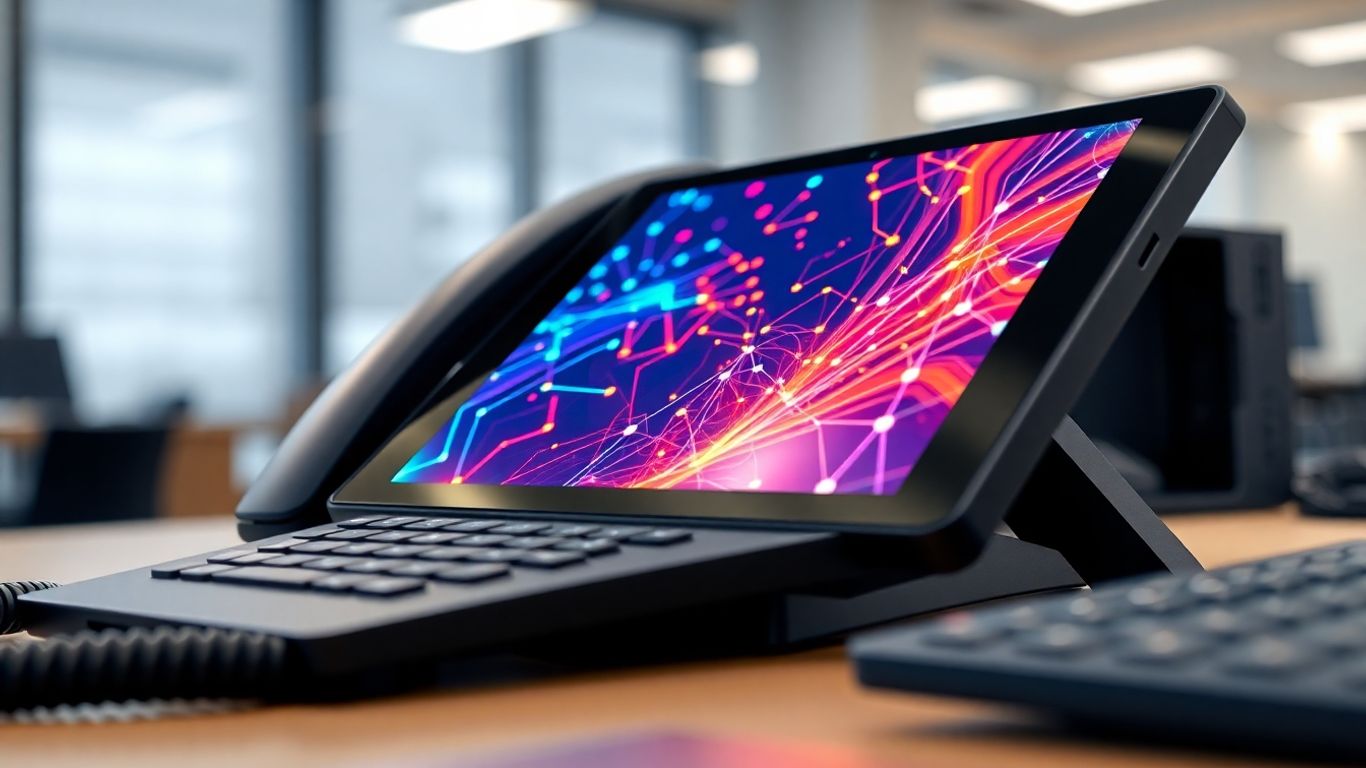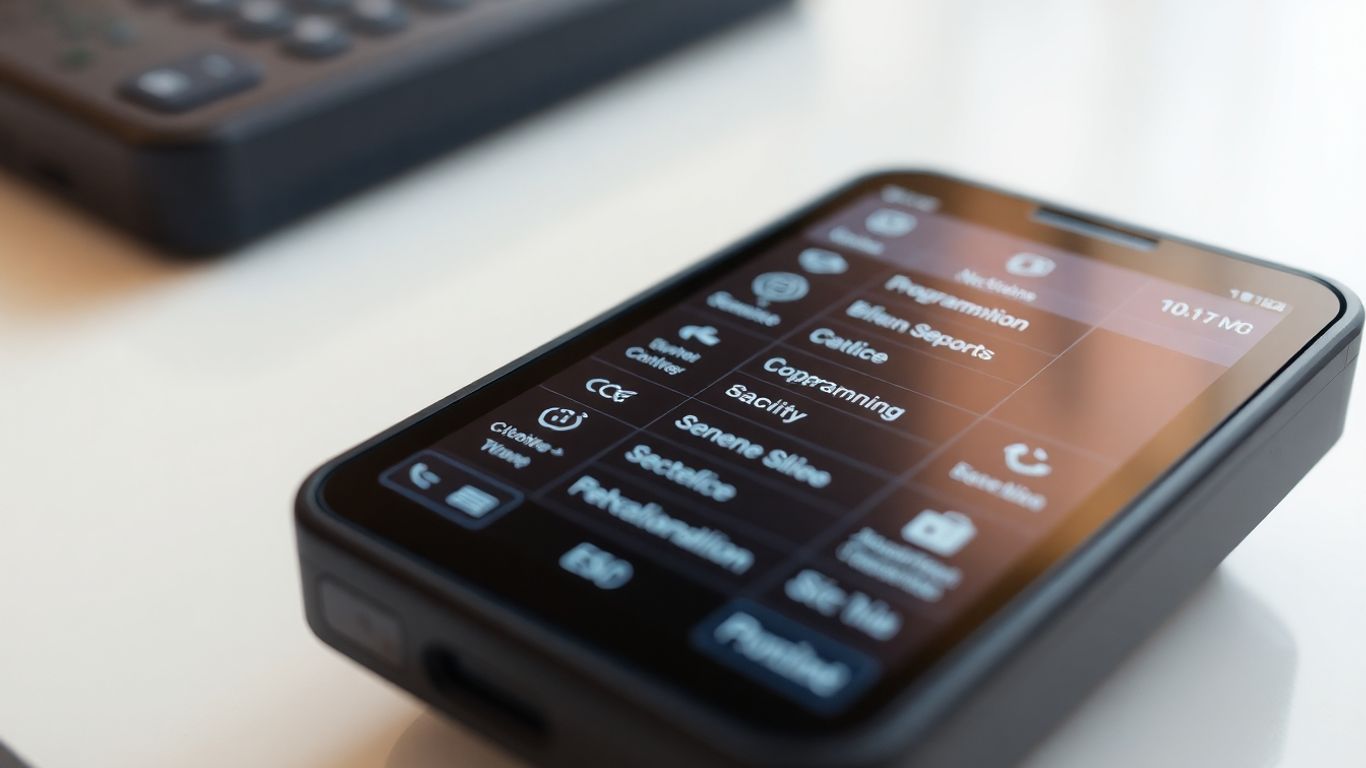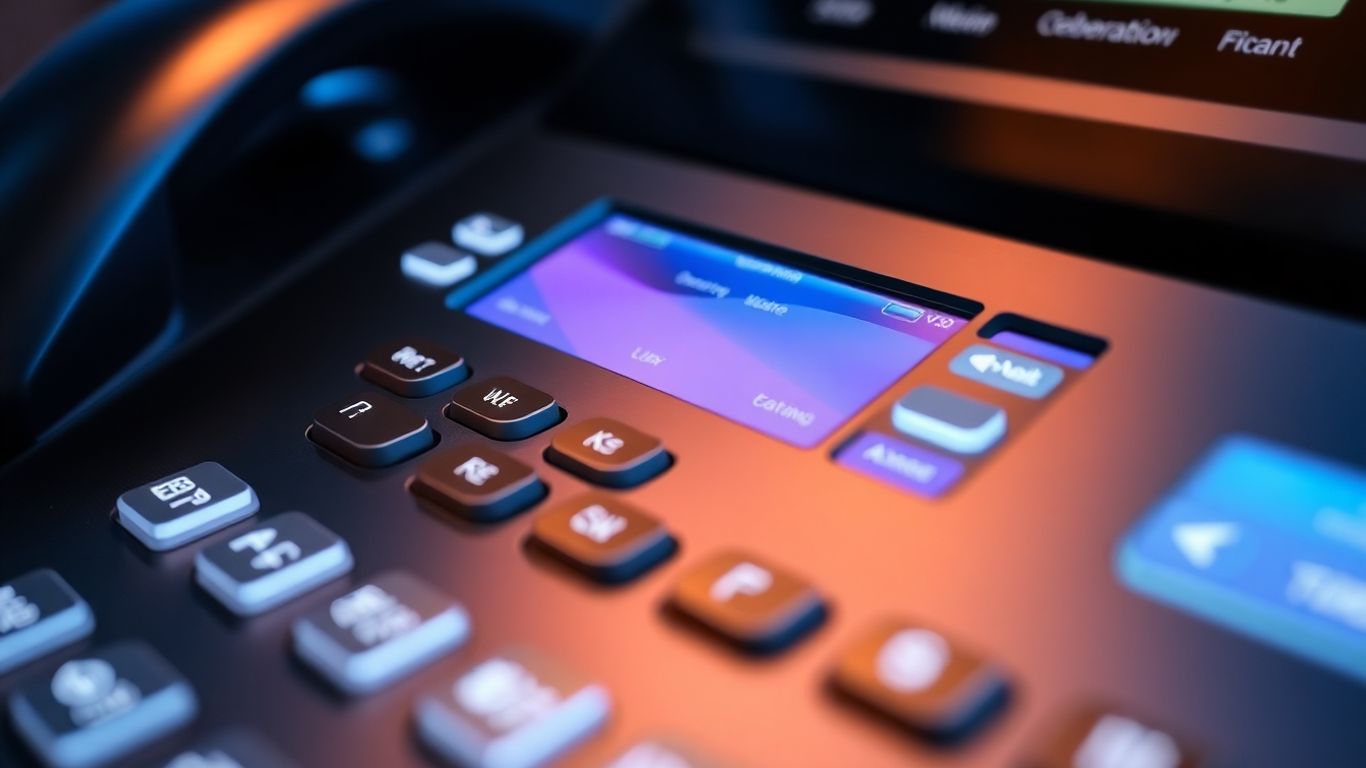So, you've got an ESI phone system and you're looking to get the most out of its auto attendant feature. It can seem a bit daunting at first, right? Like trying to assemble furniture without instructions. But honestly, once you get the hang of esi phone auto attendant programming, it's not that bad. It's all about understanding the basics and then building from there. This guide is here to break it all down, step-by-step, so you can make your phone system work smarter, not harder, for your business.
So, you're looking to get a handle on ESI phone auto attendants? It's not as complicated as it might sound at first. Think of it as the digital receptionist for your business, guiding callers where they need to go without you having to lift a finger for every single call. It's all about making things smoother for both your customers and your team.
At its heart, an ESI auto attendant is built on a few key pieces. You've got your greetings, which are the first thing callers hear. Then there are the menus, where callers press numbers to choose options. Finally, there's the routing, which is how the system actually sends the call to the right place – be it a person, a department, or even another automated message. Getting these parts right is the first step to a well-functioning system.
When you first log into the ESI system, it might look a bit busy. But don't let that scare you. Most of the time, you'll be working within a specific section for auto attendants. It usually involves clicking through menus to find settings for greetings, call flows, and extensions. It's pretty visual, so you can often see how calls will flow from one step to the next. Think of it like drawing a flowchart, but on your computer screen. If you're setting up a new outbound phone agent, you'll find similar interface logic. The key is to take it one step at a time and not try to change everything at once.
Setting up a basic call flow is like planning a simple route. You decide what happens when someone calls. Do they go straight to a receptionist? Or do they get a menu first? For a small business, maybe just a direct line to one person is enough. For a larger one, you'll want options. A common setup is: Greeting -> Main Menu -> Departmental Extensions. You can also set up basic voicemail options for when people aren't available. It's all about mapping out the caller's journey from the moment they dial your number to when they reach their destination.
The goal of a basic call flow is to get callers to the right place quickly and without confusion. It's the foundation upon which more complex systems are built, so getting this right saves a lot of headaches down the line.

So, you've got the basics down with your ESI auto attendant. That's great! But what if you want to make it do even more? ESI systems are pretty flexible, and there are ways to really fine-tune how calls are handled, especially when things get a bit more complex. It's not just about directing calls anymore; it's about making the system work smarter for your business.
This is a big one for making sure callers always reach the right place, no matter when they call. Think about it: your business hours aren't 24/7, and your staff might have different schedules. Time-based routing lets you set up different call paths for different times of the day, days of the week, or even holidays. It's like having a receptionist who knows exactly who to send someone to, even when the office is closed.
Here's a quick rundown of how it generally works:
This feature really helps manage caller expectations and ensures they get the information or help they need without getting frustrated by unanswered calls during off-hours.
Your auto attendant's voice is the first impression many callers get. Making it sound professional and informative is key. ESI allows you to record custom greetings and prompts, which is way better than a generic, robotic voice.
The tone and clarity of your auto attendant's voice can significantly impact how callers perceive your business. A well-crafted message shows you care about their experience.
As your business grows, you'll likely have different teams or departments. Setting up specific extensions for these departments makes it easy for callers to get directly to the right people. This avoids the need for a human receptionist to manually transfer every single call.
For example, you might set up:
When setting these up, make sure the menu options clearly state which extension corresponds to which department. This makes the caller's journey smooth and efficient, saving them time and freeing up your staff to focus on their core tasks instead of just answering phones.

So, you've got your ESI auto attendant set up, and it's doing a decent job of directing calls. But what if it could do more? What if it could actually help your business run smoother, not just answer the phone? That's where integrating it with other tools comes in. It's not just about making calls; it's about making your whole operation more efficient.
Zapier is pretty wild. It's like a digital connector that lets different apps talk to each other. Think of it as a universal translator for your software. With ESI, you can use Zapier to link your phone system to over a thousand other applications. This means when a call happens, or a voicemail is left, it can automatically trigger an action in another app you use. For example, a new lead coming in through your auto attendant could automatically create a contact in your CRM, or a customer service request could generate a ticket in your support system. It's about making sure information flows without you having to manually move it around.
Here's a quick look at how it works:
The real magic here is cutting down on repetitive tasks. Instead of copying and pasting information or manually updating records, your systems can do it for you in the background. This frees up your team to focus on actual work, like talking to customers or closing deals, instead of administrative busywork.
Your Customer Relationship Management (CRM) system is probably the heart of your sales and customer service efforts. Integrating your ESI auto attendant with it can make a huge difference. Imagine this: a call comes in, and before your receptionist or sales rep even picks up, their screen pops up with the caller's history, previous interactions, and any open tickets. That's what CRM integration can do.
This isn't just about convenience; it's about providing better service and making your sales team more effective. They spend less time searching for information and more time building relationships.
What happens after a call is just as important as the call itself. With ESI, you can set up your auto attendant to trigger actions based on how a call concludes. For instance, if a caller indicates they're interested in a specific product during their interaction with the auto attendant, that information can be used to automatically send them relevant product information via email or text. Or, if a call is transferred to a specific department and then ends, it could trigger a follow-up task for that department.
By automating these post-call processes, you ensure that no opportunity is missed and that customers receive timely information, which can really improve their overall experience with your business.

So, you've got your ESI auto attendant set up, and it's doing its thing. That's great! But are you really getting the most out of it? Just like anything, if you don't keep an eye on it, it can start to slip. We want to make sure it's running smoothly, not just for your callers, but for your bottom line too.
Think of call data like a report card for your auto attendant. It tells you what's working and what's not. You can see how many calls are coming in, where they're going, and if people are actually getting to where they need to be. Are callers hanging up after the first prompt? That's a sign something's not right. Are they getting stuck in a loop? Definitely a problem.
Looking at this data regularly helps you spot trends and make small adjustments that can make a big difference in how efficient your phone system is. It’s not about making huge changes, but about fine-tuning.
This is a big one, especially if you're using any kind of AI-powered receptionist or advanced features. You don't want costs to creep up unexpectedly. Setting limits on how long these automated services can run is smart. It's like putting a cap on your spending before it gets out of hand.
Here's how it can help:
What happens when your business suddenly gets super busy? Maybe it's a holiday sale, a product launch, or just a really good marketing campaign. Your auto attendant needs to be able to handle that extra load without falling apart. If it gets bogged down, callers will get frustrated, and that's the last thing you want.
ESI phone systems can do more than just handle calls; they can also manage text messages in smart ways. This means your business can send out information automatically, right when it's needed, without someone having to manually type it out. It's about making communication smoother and faster for everyone involved.
Think of this as setting up "if this, then that" rules for texts. You tell the ESI system what kind of caller request or conversation point should trigger a specific text message. For example, if a caller asks about pricing, the system can be set up to automatically text them a link to your price list. This saves time for your staff and gets the caller the information they need right away.
Here are some common scenarios you might set up:
This is where ESI really shines. Instead of having someone search for and email a document, the system can do it instantly. Imagine a potential client calls asking for a company overview. The ESI system can recognize this request and send a PDF of your company profile directly to their phone via text. This is super handy for things like:
The key is that the information is delivered in real-time, directly to the caller's device, without interrupting the flow of the phone conversation.
ESI's advanced features can use artificial intelligence to understand what's being said on a call. This means it doesn't just rely on keywords; it can grasp the context of the conversation. So, if a caller is talking about needing a specific service, and the AI understands that, it can then trigger a text with relevant service details or a contact person's information. This makes the automated texting feel much more natural and helpful, almost like a human assistant is managing the communication behind the scenes.
Keeping your ESI phone system running smoothly and keeping your data safe is pretty important, right? It’s not just about having a phone that works; it’s about making sure your business communications are protected and always available. Think of it like locking your doors at night – you want to know your business is secure.
ESI systems come with built-in ways to keep things secure. This isn't just about passwords, though those are important too. It involves things like encryption, which scrambles your data so only authorized people can read it. It also means making sure that only legitimate calls get through and that your system isn't an easy target for hackers. Keeping your system updated with the latest security patches is also a big part of this. It’s like getting regular check-ups for your system to catch any potential problems before they get serious.
Nobody likes it when the phone system goes down. It means missed calls, frustrated customers, and lost opportunities. ESI systems are built to be reliable, using quality parts and smart design to minimize downtime. This means your business can keep operating, even during busy periods or unexpected events. The goal is to have your phones working when you need them, plain and simple.
Here’s a quick look at what contributes to uptime:
Reliable communication isn't a luxury; it's a necessity for any business that wants to stay competitive and keep its customers happy. When your phone system is dependable, your team can focus on their work without worrying about communication breakdowns.
This feature is a real lifesaver for staying connected. Instead of just having voicemails stuck on a phone, they get sent directly to your email inbox as audio files. This means you can check messages from anywhere, on any device, without having to log into a specific voicemail system. It makes managing messages much easier and helps you respond to callers faster, which is always a good thing for customer service.

Making sure your customers have a good time when they call is a big deal, right? It's not just about answering the phone; it's about how you make them feel. With ESI auto attendants, you can really tweak things to make callers feel welcome and get them where they need to go without a fuss.
Think about the first thing someone hears when they call. Instead of a generic "Please hold," you can make it personal. ESI lets you set up greetings that can change based on who's calling or even the time of day. It’s like having a receptionist who knows everyone’s name and is always ready with a friendly word.
A little personalization goes a long way. It shows you care about the caller's experience from the very first second.
Nobody likes being put on hold. ESI auto attendants help cut down on that. By directing calls quickly to the right person or department, you skip unnecessary transfers and get callers to help faster. It’s all about smart routing.
Here’s how it helps:
Your business doesn't stop when the clock hits 5 PM, and neither should your customer service. ESI auto attendants can work around the clock, answering basic questions, taking messages, or directing calls even when your office is closed. This means customers can get help or information whenever they need it, which is a huge plus.
Even the most well-programmed ESI auto attendant can hit a snag now and then. When things go sideways, it's good to have a plan. Let's look at some common problems and how to fix them.
Call routing issues are probably the most frequent headache. You set it up one way, but calls end up somewhere else entirely. It's super frustrating.
Bad audio can make even the best auto attendant sound unprofessional. Callers might not understand prompts, or they might just hang up.
If your auto attendant is supposed to connect with other systems, like a CRM, and it's not working, that's a big problem. It means automated tasks aren't happening.
When troubleshooting, always start with the simplest explanations. A loose wire or a forgotten password can cause more trouble than you'd think. Documenting every step you take during the troubleshooting process will also save you time if you need to escalate the issue or revisit it later.
So, you've got this ESI auto attendant set up, and it's doing its thing. But are you actually seeing the payoff? It's not just about having the tech; it's about making it work for you. Let's talk about how to really get your money's worth out of it.
Think about all those hours your staff used to spend answering basic questions or directing calls. Now, imagine that time freed up. That's direct savings. If an employee making $25 an hour spends just 10 hours a week on tasks the auto attendant now handles, that's $250 a week, or over $13,000 a year, saved. The auto attendant pays for itself pretty quickly when you look at it like that.
Here's a quick breakdown:
When your team isn't bogged down with repetitive phone duties, they can actually do their jobs. This means more time for client interaction, project work, or strategic planning. An auto attendant can act as a first filter, gathering basic info or directing calls so that when a call reaches an employee, it's already qualified or routed correctly. It's like giving everyone a personal assistant for their phone calls.
Missed calls often mean missed sales. An ESI auto attendant can ensure that every caller, even outside business hours, gets a response or has their information captured. This means leads aren't slipping through the cracks. You can set up prompts that guide potential customers, collect their details, or even schedule follow-up calls automatically. This consistent, 24/7 availability can make a big difference in closing deals.
The real magic happens when you connect your ESI auto attendant to other business tools. Imagine a caller asking for pricing, and the system automatically texts them a link to your price sheet. Or a lead calling in, and their information instantly populating your CRM. These aren't just conveniences; they're revenue generators.
By focusing on these areas, you move beyond just having a phone system to actively using your ESI auto attendant as a tool to improve your bottom line.
ESI phone systems are built with growth in mind. They use a modular design that lets you add more users and features as your company expands. This means you don't have to replace your entire system when you hire new people or open a new office. You can just add what you need. It's like having a Lego set for your phone system – you can always add more bricks.
Technology changes fast, and your phone system needs to keep up. ESI systems are designed to be flexible. They can integrate with other business tools you use, like your CRM, and can be updated with new software. This keeps your communication modern and efficient, no matter what new trends pop up.
The ability to adapt is key. What works today might be outdated tomorrow. Having a system that can evolve means you're always ready for what's next, without being stuck with old tech.
ESI is also looking ahead by incorporating AI. Think about AI-powered receptionists that can handle calls 24/7, understand complex questions, and even send out information via text. This isn't just about answering phones; it's about making your business smarter and more responsive. These AI capabilities can significantly reduce missed opportunities and improve how customers interact with your business.
Make sure your business is ready for what's next in how we talk to each other. Our tools help you stay connected, no matter what. Want to see how we can help you keep up with the future? Visit our website today!
So, we've gone through a bunch of stuff about setting up your ESI phone's auto attendant. It might seem like a lot at first, but really, it's about making things work better for you and your customers. Getting these settings right means fewer missed calls and a smoother experience for everyone. Don't be afraid to play around with it a bit. You can always tweak things later if something isn't quite working. The goal is to make your phone system do the heavy lifting so you can focus on running your business. Give it a shot, and see how much easier things can get.
Think of an auto attendant as your business's digital greeter. When someone calls, it answers the phone and gives them options, like 'Press 1 for sales' or 'Press 2 for support.' It helps direct callers to the right place without needing a person to answer every single call.
Setting up the basic flow is like drawing a simple map for your callers. You decide who answers when and what options people have. You can usually do this through a special online portal or software that comes with your ESI system. It's about deciding the first few steps a caller takes.
Yes! You can set it up so the auto attendant acts differently depending on the time of day or even holidays. For example, it can give a different greeting and options after business hours than it does during the day. This makes sure callers always get the right information, no matter when they call.
You can record your own voice messages or use text-to-speech tools to create greetings and prompts. It's best to speak clearly and keep the messages short and to the point. You can even have different messages for different situations, like a special holiday greeting.
Zapier is like a connector for different online tools. It lets your ESI auto attendant talk to other apps you use, like your customer list or calendar. So, when a call ends, Zapier could automatically add a note to your customer records or schedule a follow-up task. It makes everything work together smoothly.
This is a super handy feature! When someone leaves a voicemail, the system turns it into an audio file and sends it directly to your email inbox. This means you can check your messages from anywhere, just like you check your emails, without having to call into your voicemail system.
Good ESI systems are built to handle lots of calls at the same time! They don't get 'busy' like old phone lines. Your auto attendant can manage many callers simultaneously, making sure no one gets a busy signal, even during your busiest times. It's designed to scale up when needed.
Yes, some ESI systems can send text messages automatically based on what's happening in a call. For example, if someone asks for pricing, the auto attendant could instantly text them a link to your price list. It's a neat way to give callers information quickly without interrupting the conversation.
Start your free trial for My AI Front Desk today, it takes minutes to setup!








